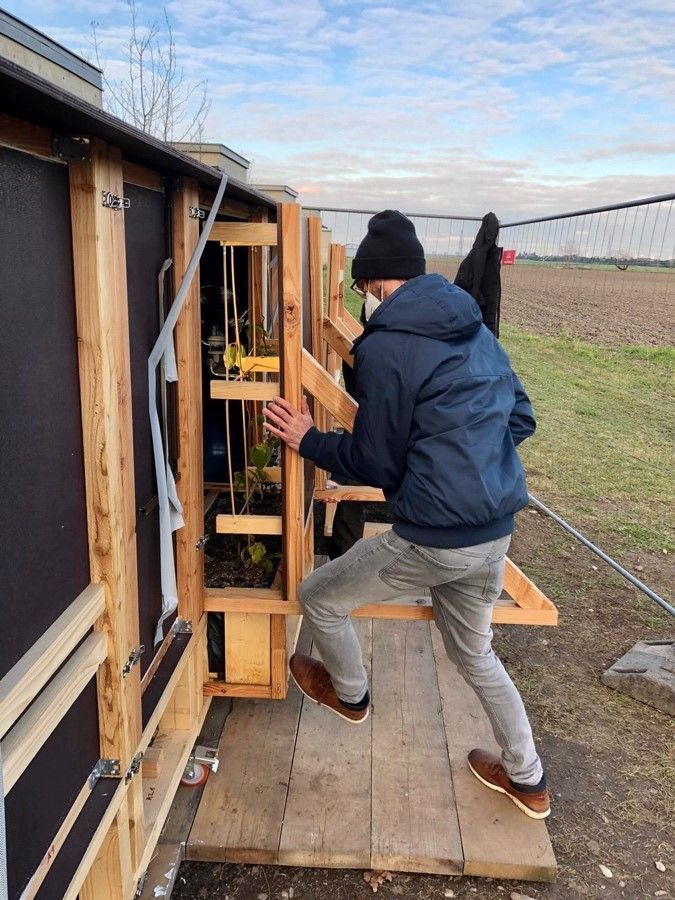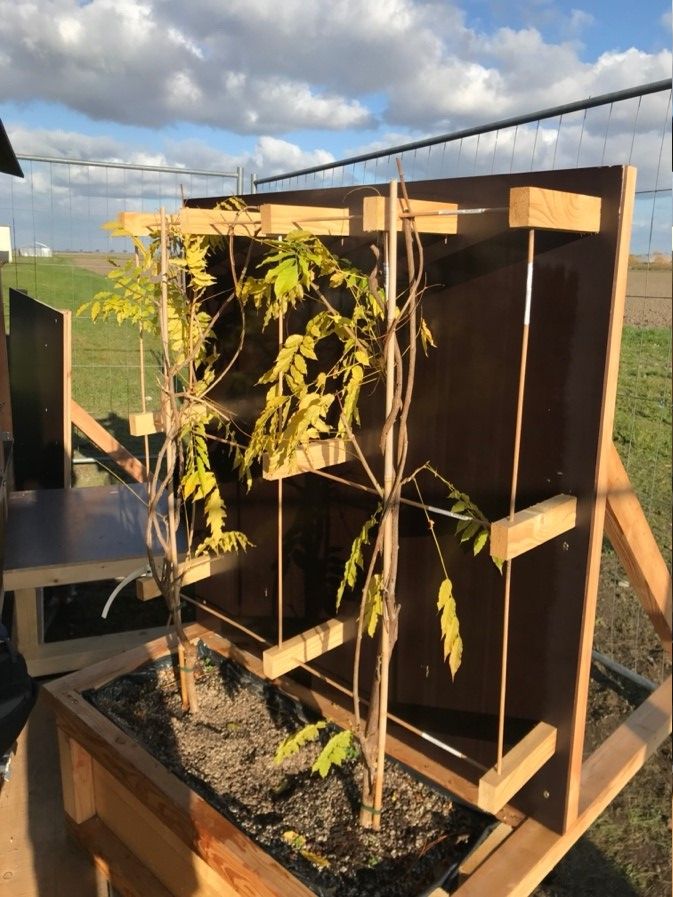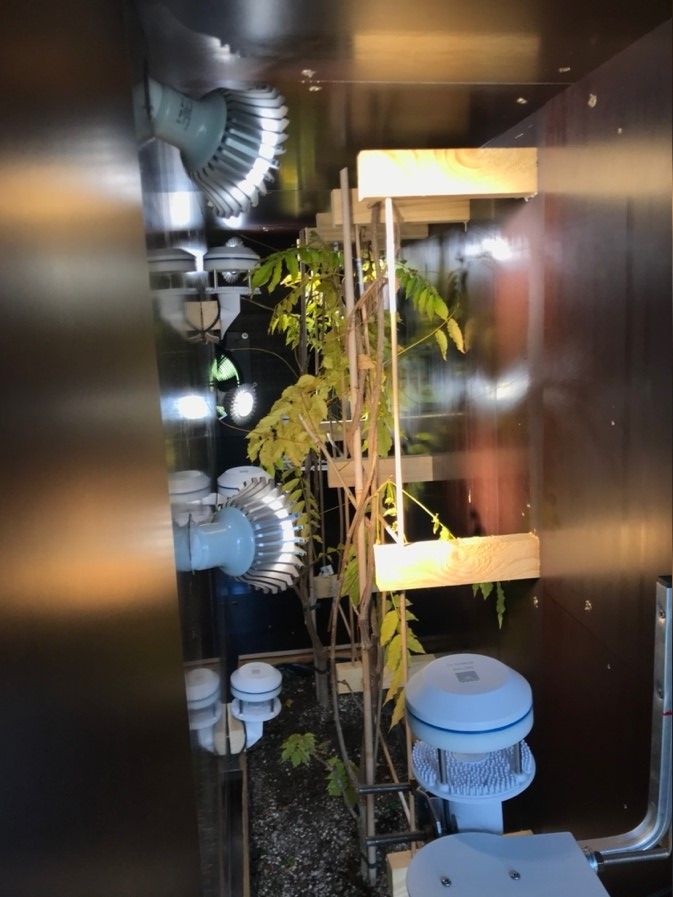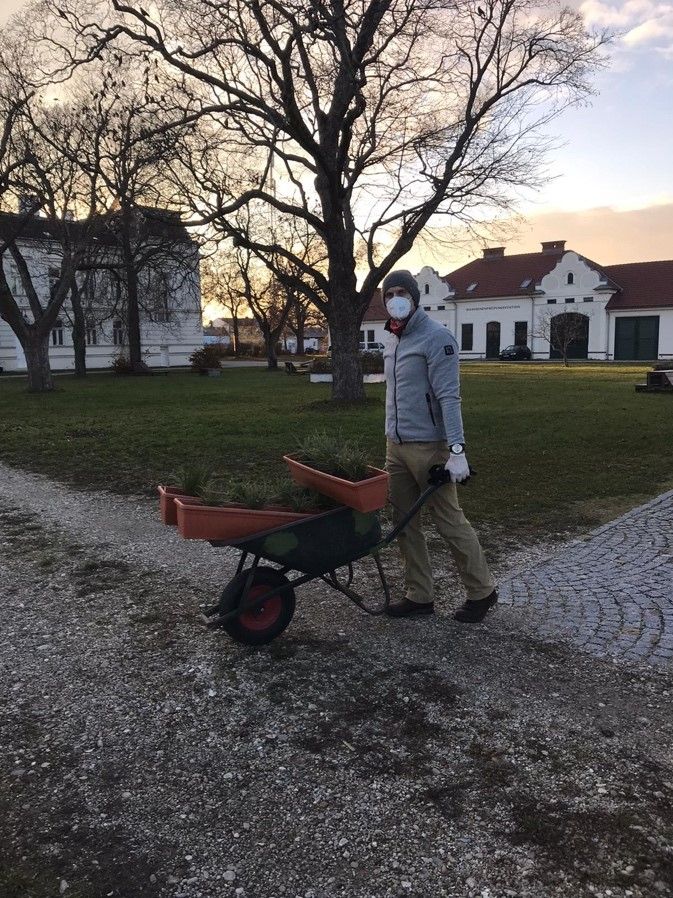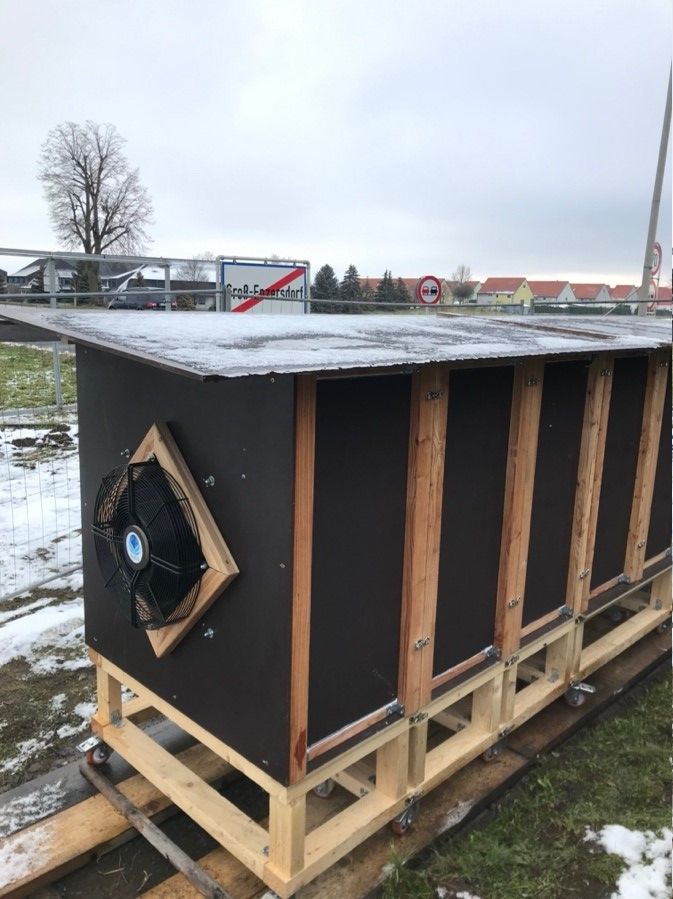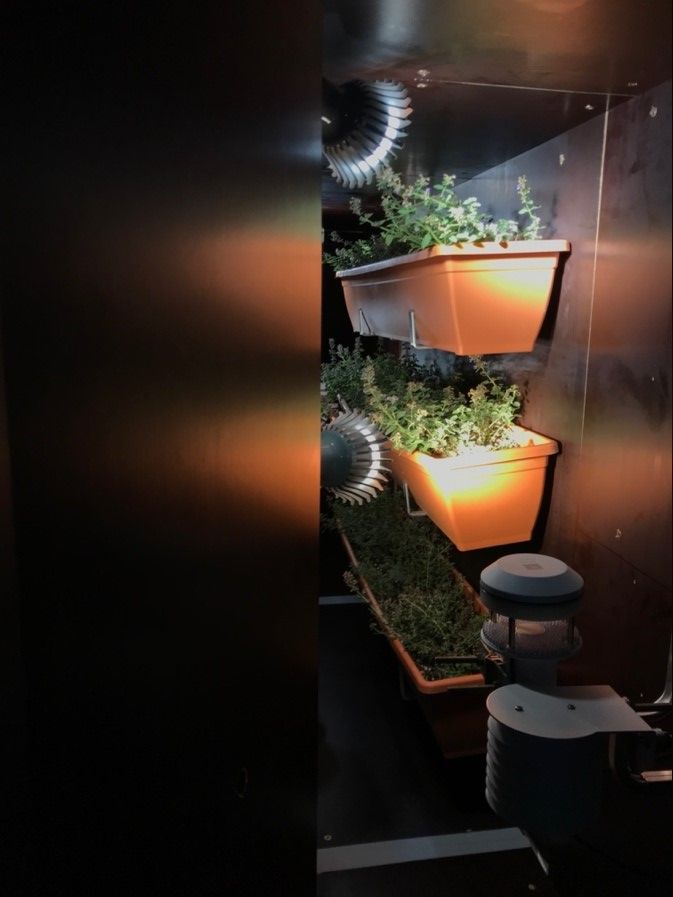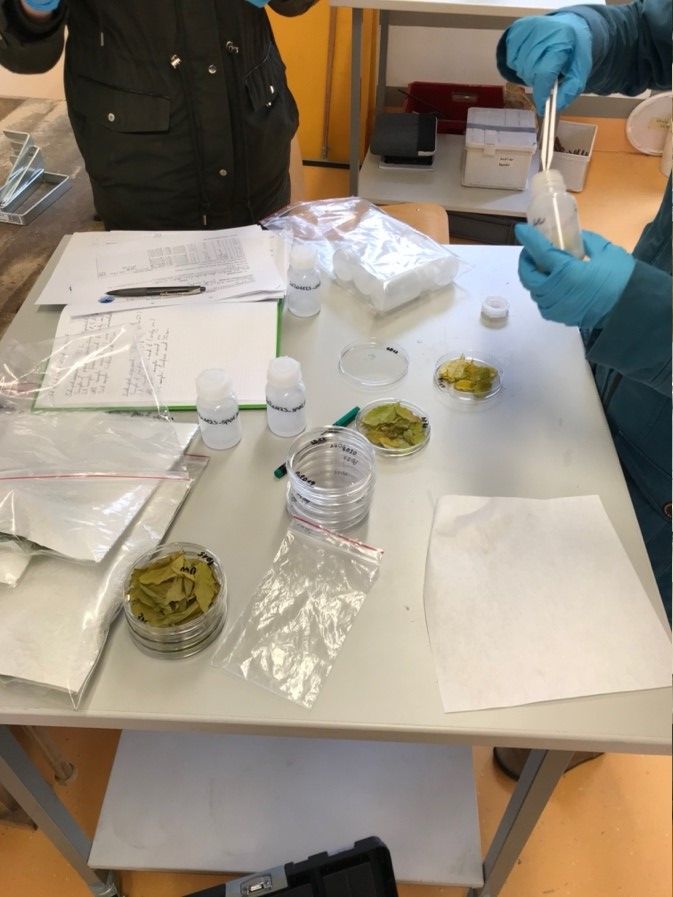First Wind Tunnel experiments in November and December 2020
From mid-November to December, the first series of wind channel experiments was conducted in the experimental garden of the Institute of Soil Bioengineering and Landscape Construction (IBLB, BOKU) in Groß-Enzersdorf, Lower Austria. The wind tunnel offers the possibility to measure input quantities of different particulate matter sizes at different locations with different facade greening systems in a defined area with influence on wind speed and loading time.
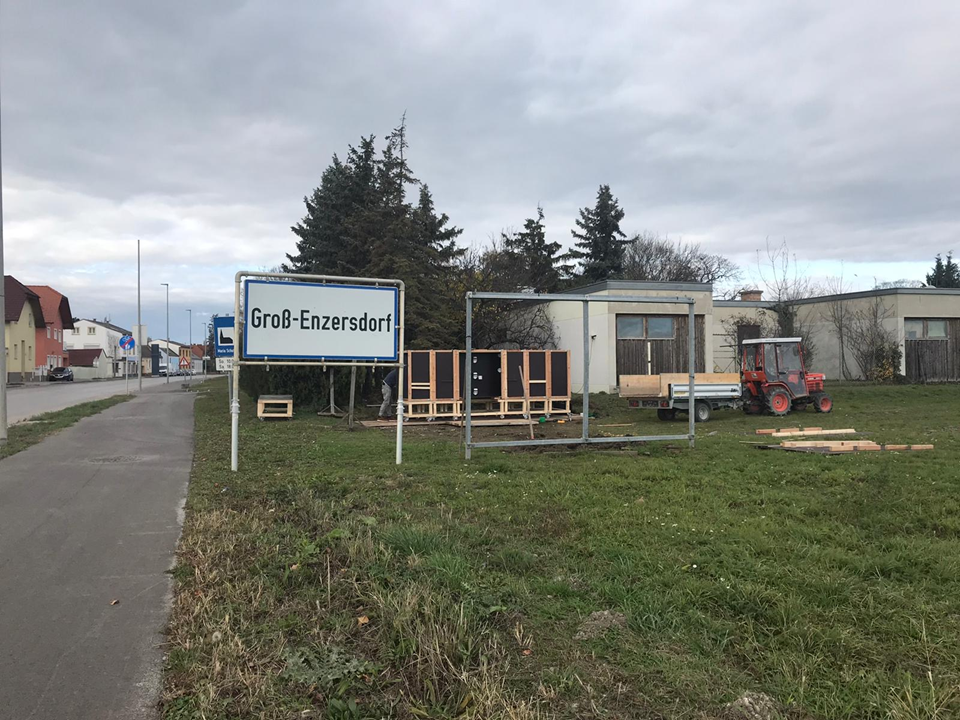
In a first experiment, the wind tunnel was set up at the entrance to the town near the road. The input and output variables of the particles in the wind tunnel from the ambient air were measured along with the atmospheric parameters in order to be able to find correlations.
In order to determine the performance of façade greening with regard to the binding of particles, two different façade greening systems were clamped as modules in the wind tunnel. At first, the climbing plants Wisteria floribunda and Akebia quinata were tested, followed by Nepeta x. faassenii, Geranium macrorrhizum and Sesleria heufleriana in cassette systems.
Leave and soil samples were taken before the start of the experiment and after a certain amount of time inside of the channel at a given wind speed. In addition, air filter samples were taken for the respective points in time.
